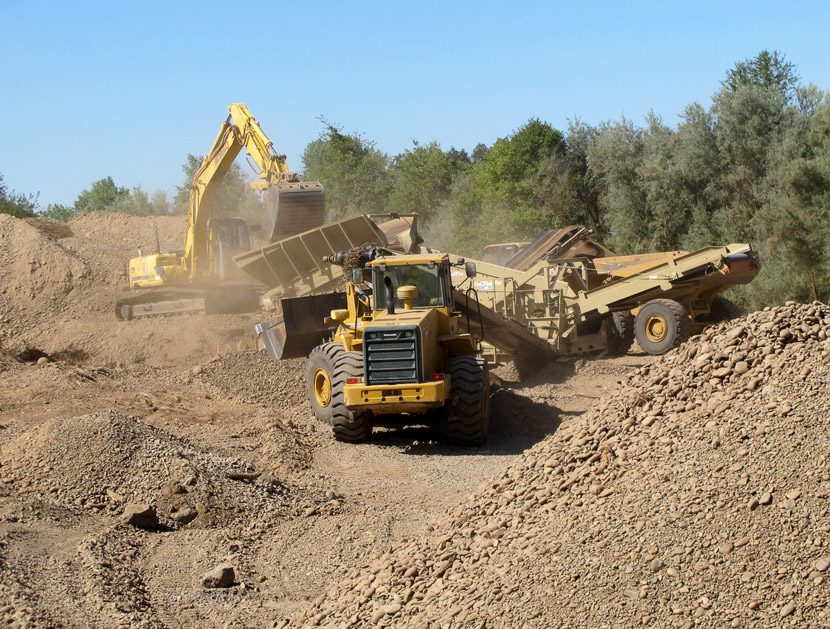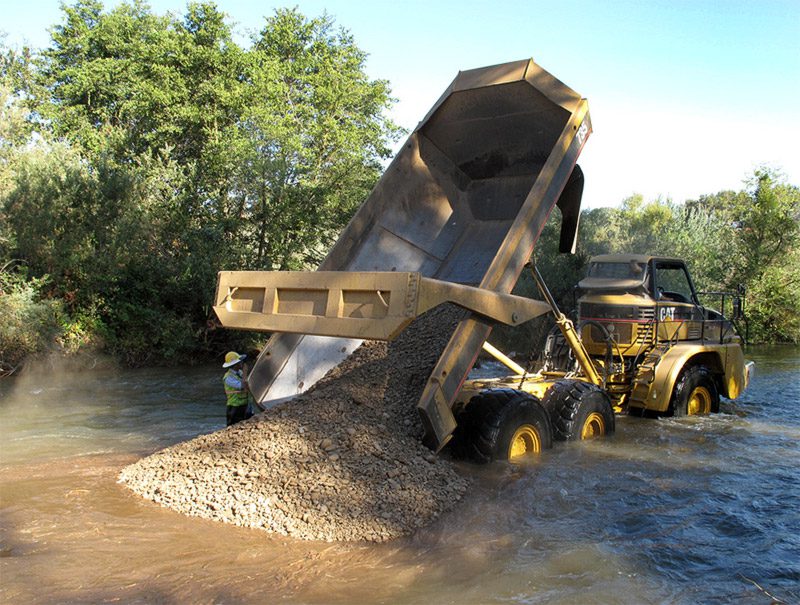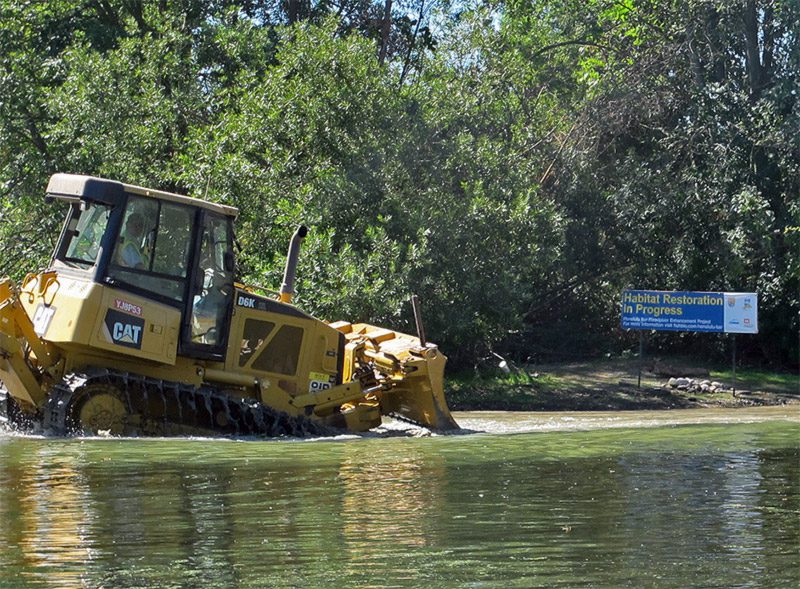Wednesday August 8, 2012
As with many rivers in California, the Stanislaus River has a deficit of good quality gravel for salmon and steelhead spawning. During the Gold Rush era large shovel dredges processed vast quantities of gravel and deposited the tailings in piles, usually adjacent to the stream. One such tailing in the Stanislaus River (Honolulu Bar) formed a large in-stream island and a side channel that was not accessible to fish under most flows. We are working with the Oakdale Irrigation District (OID) and the U.S. Fish and Wildlife Service’s Anadromous Fish Restoration Program (AFRP) to decrease the island elevation, so that it will become inundated under typical spring flows and provide more juvenile salmonid rearing habitat. Gravel removed from the island is being returned to the river channel to replenish spawning beds.
The groundwork for this project began with the removal of existing vegetation on the island—mostly undesired, non-native species—to expose the stockpile of coarse gravel below. Using excavators and front loaders, crews are now extracting the gravel, sorting, and washing it before strategically placing it back into the river channel. Delayed by high flows last year, this work is taking place during the lowest flow of the year to allow heavy equipment to access the river. The team is working quickly, since this project must be completed before fall-run Chinook begin their annual spawning migration.




